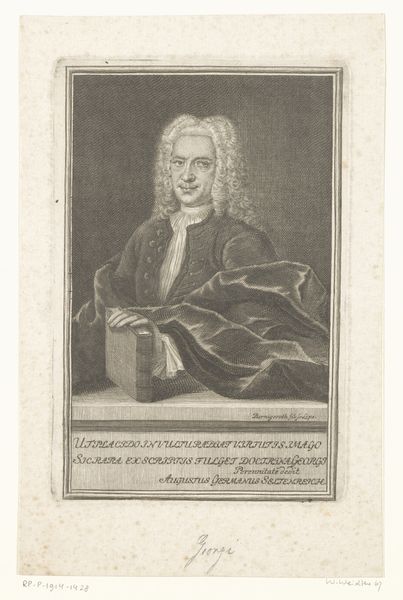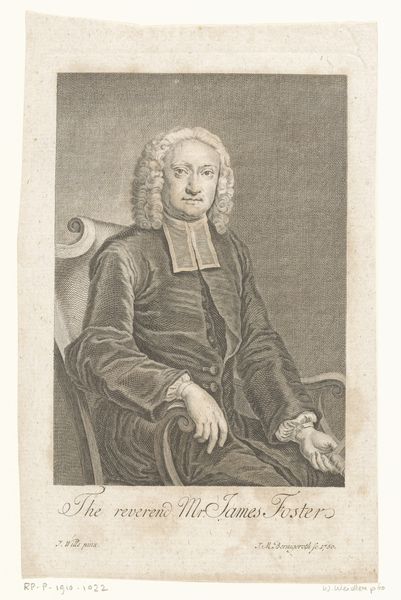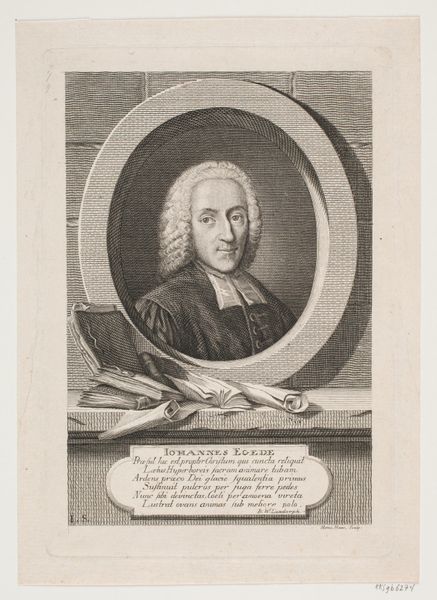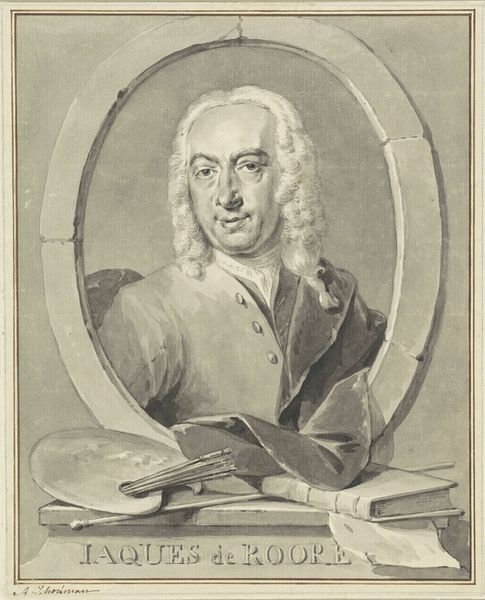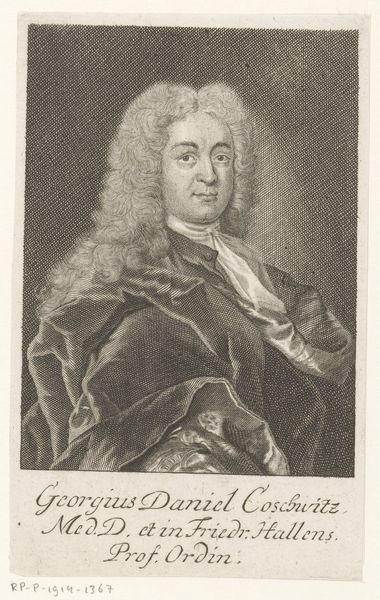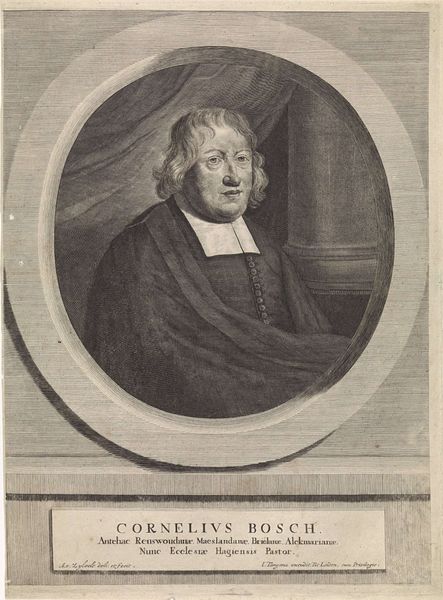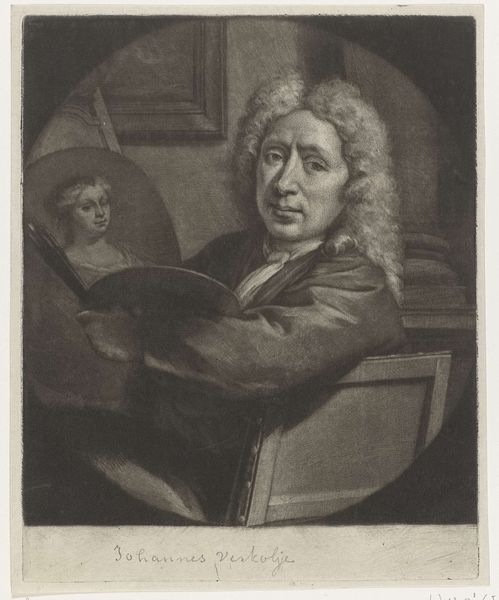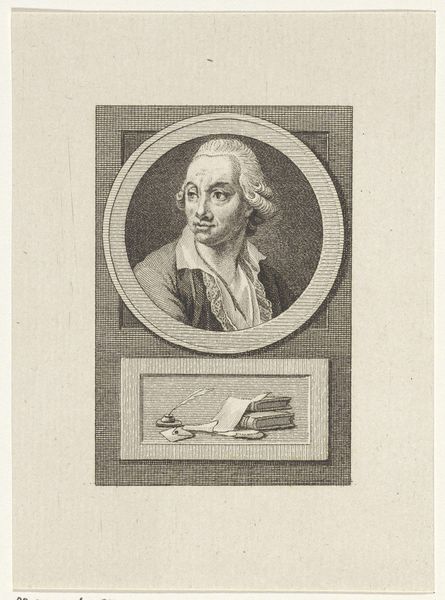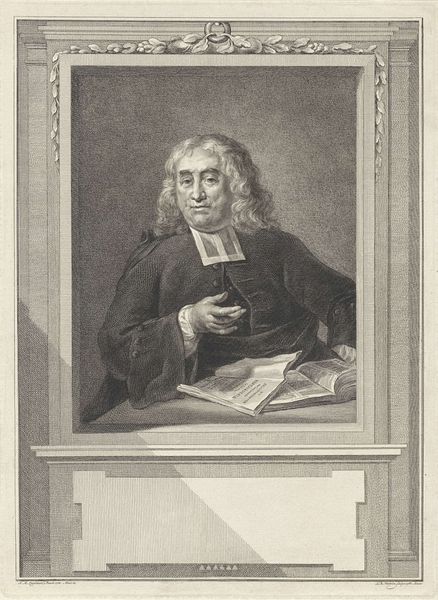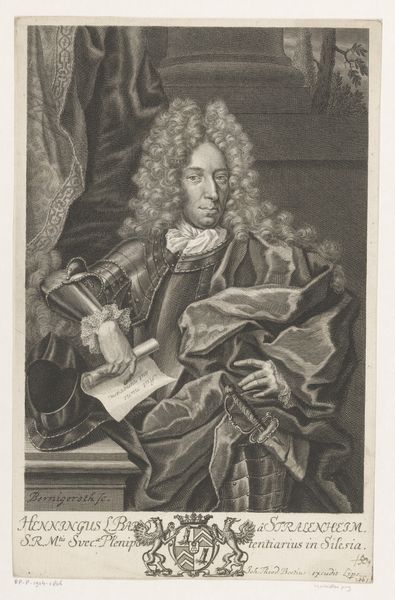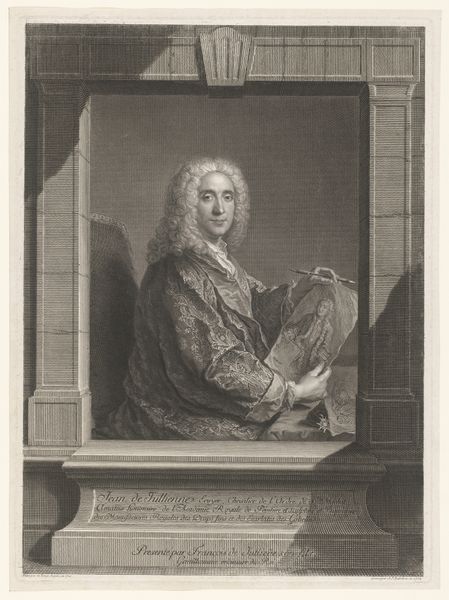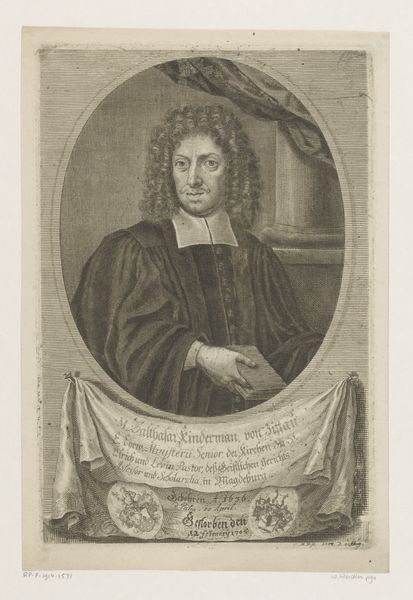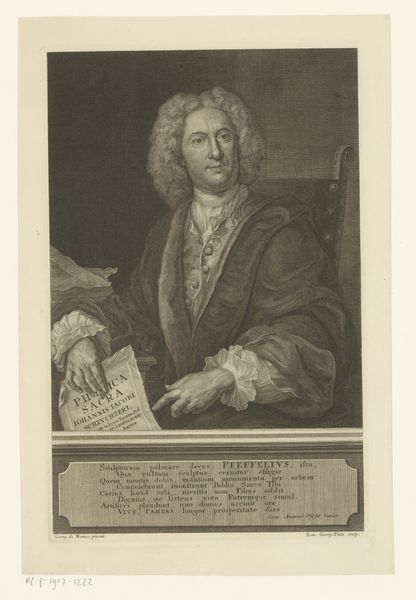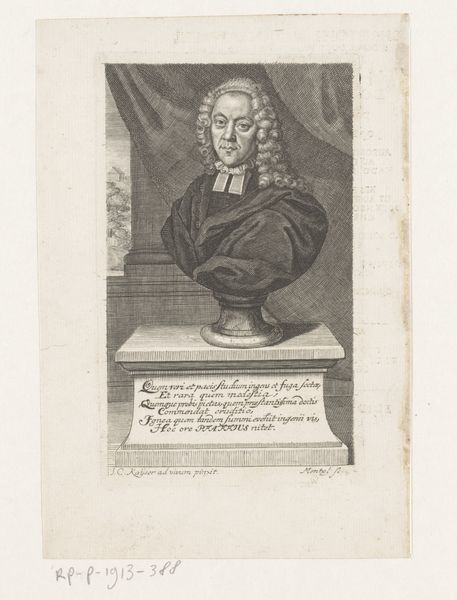
drawing, paper, pencil
#
portrait
#
pencil drawn
#
drawing
#
neoclacissism
#
facial expression drawing
#
light pencil work
#
pencil sketch
#
charcoal drawing
#
paper
#
portrait reference
#
pencil drawing
#
pencil
#
animal drawing portrait
#
portrait drawing
#
fine art portrait
#
realism
Dimensions: height 224 mm, width 199 mm
Copyright: Rijks Museum: Open Domain
In 1766, Julius Henricus Quinkhard made this chalk and graphite portrait of Hendrik Busserus. The support is paper, a relatively inexpensive material that democratized image-making in the eighteenth century. Look closely, and you’ll see a subtle, yet skilled, application of line and shading. Quinkhard likely used finely pointed graphite sticks and chalk pencils to achieve the delicate textures in Busserus's face, wig, and clothing. The process would have demanded careful layering and blending to create an illusion of depth and volume. The drawing has hatched lines, used to create tonality and form. There are delicate touches of red chalk to warm up the portrait. Such a portrait reflects the growing middle class of the 1700s and their desire to emulate the aristocracy. The making of portraits became increasingly accessible due to new materials, and different modes of production. This drawing reveals the intimate connection between material, technique, and social context in understanding the full meaning of an artwork, challenging traditional distinctions between fine art and craft.
Comments
No comments
Be the first to comment and join the conversation on the ultimate creative platform.
